December 5, 2010 - 2:10pm
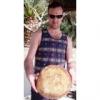
Pain de Siègle; a more familiar formula
This loaf contrasts well with the high rye posted on very recently. A large boule, leavened with a rye sourdough, comprising just short of 25% of the total flour in the formula.
[A 1.7kg Boule made with Rye Sourdough; that's 3¾lb!]
|
Material |
Formula [% of flour] |
Recipe [grams] |
|
1. Rye Sourdough [2 builds] |
|
|
|
Bacheldre Dark Rye |
24 |
240 |
|
Water |
40 |
400 |
|
TOTAL |
64 |
640 |
|
2. Final Dough |
|
|
|
Rye Sourdough [from above] |
64 |
640 |
|
White Bread Flour [Allinsons] |
76 |
760 |
|
Salt |
1.8 |
18 |
|
Water |
28 |
280 |
|
TOTAL |
169.8 |
1698 |
|
% pre-fermented flour |
24 |
|
|
Overall hydration |
68 |
|
Method:
- Utilise the autolyse technique with the flour, water and rye sourdough, for 50 minutes.
- Add the salt and mix using Andrew Whitley's "air-kneading" technique for 15 minutes. Rest for 15 minutes on an oiled-counter, under cover.
- Mix a further 10 minutes.
- Bulk proof covered in an oiled container for 1½ hours. Knock back, then rest for 15 minutes.
- Mould and place upside down in a Banneton, prepared with dark rye and semolina.
- Prove 1½ hours; meanwhile pre-heat the oven to 250°C.
- My Bake profile as follows: Pour boiling water onto a pan of large stones in the base of the oven, 3 minutes prior to baking. Tip the loaf onto a tray, and slash the top. Cover this with a large roasting dish, and place all of this onto the hot bricks in the middle shelf of the oven. Add further boiling water to the pan of rocks. Leave for 20 minutes. Then, remove the cover and turn the heat down to 210°C. Bake a further 20 minutes. Then turn the heat down to 200°C and bake out a further 5 - 10 minutes.
- Cool on wires.
Notes:
- It's freezing in the UK just now! Kitchen temperature 10°C, Flour temperature 11°C and Rye Sour just 12°C [but wonderfully active, all the same!] 4 times DDT [26°C] = 104. Take the 3 above numbers away, and the required water temperature is an astonishing 71°C! So, I used the kettle and drew water at exactly that temperature, and, lo and behold the DDT was just what I wanted: 26°C!
- This is one big loaf! The roasting pan method was almost successful, but I really needed a bigger vessel. The Lodge Logic Combo Cooker is on my Christmas list. I'm not big on volume. If anyone can advise on the diameter of pan which I need, I would be truly grateful. I'm guessing somewhere between 20 and 24cm?
- Photographs attached. Some may call this "well-fired". But, I'm really pleased with the crust, and the close-up shots give some good detail of prized qualities. The crumb? Beautifully moist; so looking forward to my sandwiches for lunch at work tomorrow: French Brie with salad.


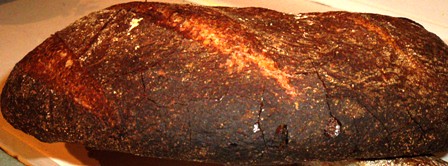

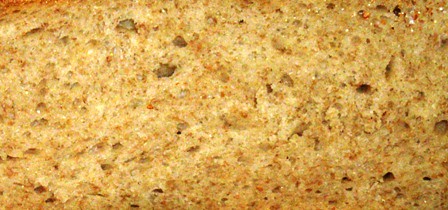
Best wishes to you all
Andy
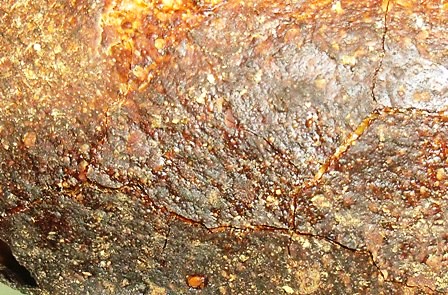
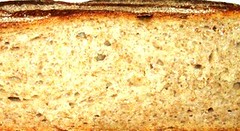


Comments
A bold bake for a bold baker! That should be a weeks worth of meals for both of you and then some to share. Very nice looking bread. So where do you find a place to ferment and proof on those cool days? I'm visualizing snuggling under the covers with your dough to share the heat!
Eric
I am loving rye breads, gotta try this one!
Is what my mother always told me to ask for at the bakery.
Lovely bread.
I apologise in advance for asking questions I ought to know the answer to, but what is Andrew Whitely's air kneading method?
Hope your Christmas weather isn't as bad as last year!
Hi Patsy,
Thanks for your compliments on the bread.
"Well fired" was a term I first came across when working in store as a baker for Sainsburys when I was studying for my baking and teaching qualifications. They introduced this as one of their new hand-shaped premium scratch loaves. Basically we baked them in a deck oven with steam, then gave them extra time with intense top heat to bring about a heavily caramelised crust. I do believe the term may have roots in Scottish baking methods, as many of these breads are famed for dark crusts...reliance on oil and wood for fuel may well have plenty bearing on this? Anyway, the Sainsburys loaves look like this:
As to "air kneading", Andrew bases much of his hands on baking courses on using this technique to develop pretty soft doughs. Think of moving your hands back and forth in front of your waist, concertina style, with the dough in between. My dough wasn't as soft as many of the Breadmatters doughs, but was too soft to work up on the bench to start with.
As for the weather...Christmas is really just round the corner, and it's brass monkeys here, and set to stay that way, I believe!
Best wishes
Andy
Thanks for commenting txfarmer,
I notice you are rather busy running marathons and baking all kinds of baguettes too. But there should always be room for baking good rye bread in a baking enthusiast's week.
Best wishes
Andy
Hi Eric and Daisy_A
Daisy's seen this pic, maybe you haven't Eric? See our cat, Shuffles, worshipping in front of my prover!
BW
Andy
Love the look of that crust Andy! The crumb is gorgeous as well, but the crust just speaks of all kinds of great flavour and to me, what a great crust should look like. Nice bake!
Franko
Hi Franko,
Great to hear from you, and thank you for your kind words.
I loved the flavour in the crust when eating the bread for lunchtime sandwiches today. Complex, you may well say!
Anyway, very telling comments just made by Alison. She thought the bread fairly light and well-proved. A compliment you may think? However, she is still enjoying the last of the "Rye Reversal" which you were admiring in the previous post. So, whilst crusty bread is not her first preference, a heavy rye and sour tang in the crumb most certainly is: very interesting!
All good wishes
Andy
Lovely bread, Andy.
Sourdough rye has such a nice character.
What fires your stove? That's a mighty nice fire you have.
Enjoy those lunches!
Hi LindyD,
Thank you for commenting on the rye bread.
We use a base of solid fuel [ovaloid shaped coke pieces] with hard wood added on top. The stove does all the hot water, plus central heating, as well as keeping us [and Shuffles, of course!] toasty warm in the living room...and proving my doughs at home. And yes, Eric, , our stone walls are actually 3' thick. However, we certainly don't live in any castle; it's a quaint terraced cottage in the frozen Northern wastelands!
All good wishes
Andy
I would think the 10 1/4 inch Combo Cooker would be large enough, but I would go with the 5 quart Lodge Double Dutch Oven. It is the same diameter as the Combo Cooker, but is 1 inch (2.5cm) deeper. The price difference is about US$4. I also think the handles would make it easier to move about.
https://secure.lodgemfg.com/storefront/product1_new.asp?menu=logic&idProduct=4082
Many thanks for this information, BjornErik.
Better hope Santa Claus gets this right then!
BW
Andy
What a great Rye, Andy!
I couldn't understand you baker's Math, though.. How is the Rye sour at 40% hydration?
Hi Khalid,
If you add the 40% in the sour to the 28% in the final dough that gives 68% hydration. So the 40 represents overall contribution to hydration, rather than reflecting the hydration % of the starter.
On flour, there is 24% in the pre-ferment and 76% in the final dough, giving the normal 100% base.
I prefer to use this method as I can see straightaway the 2 really significant factors which interest me: overall hydration, and, portion of pre-fermented flour.
Many thanks for your comment
Best wishes
Andy